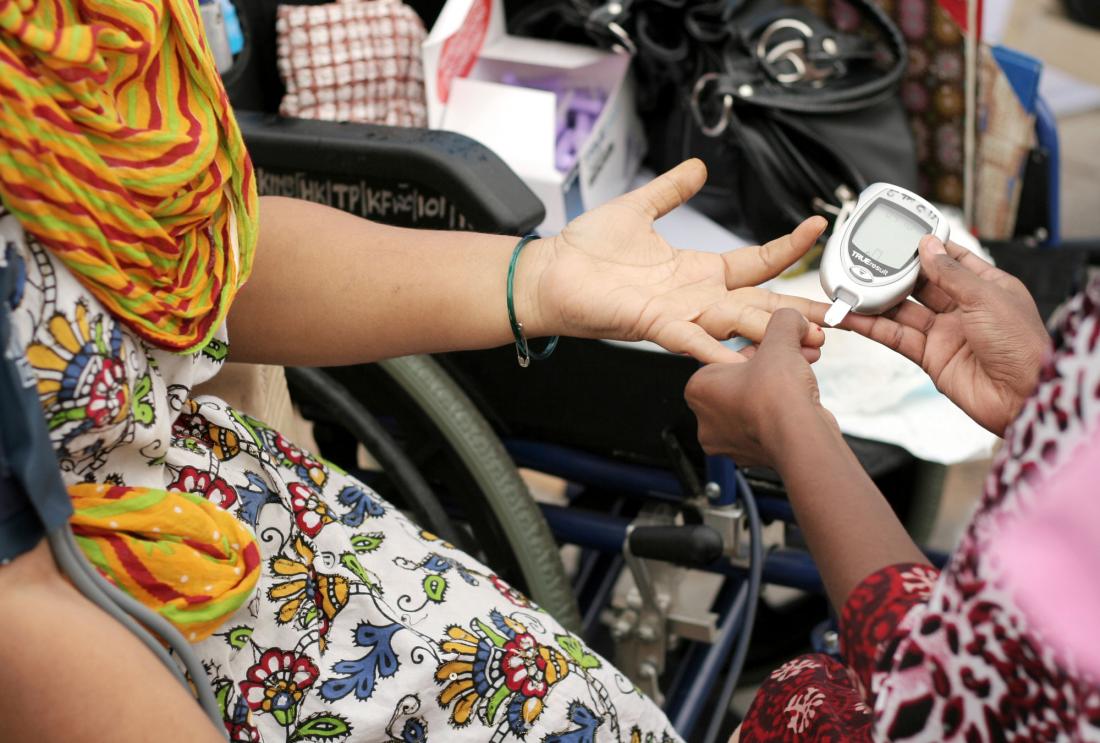Improving Non-Communicable Disease Compliance in India
- Non-communicable diseases
- Information
- Health care delivery
- Nudges and reminders
- Pricing and fees
Individuals with non-communicable diseases—a growing health concern for many developing countries— often fail to adhere to treatment regimens despite long-term benefits. In India, researchers will evaluate the impact of financial incentives, information, and reminders on treatment regimen compliance among patients of a healthcare provider in the slums of Mumbai.
الموضوع الأساسي
As poor countries develop, they face an increasing burden of non-communicable diseases (NCDs) such as heart disease, diabetes, and cancer. This growth reflects progress against communicable diseases, lifestyle changes associated with development (such as the overconsumption of unhealthy food, tobacco, and alcohol), and reductions in physical activity. Many NCDs must be treated with continuous medication and behavior change. While the long-term consequences of NCDs are severe and the costs of early care small, treatment adherence is generally poor, even when healthcare providers are accessible.
Individuals may fail to follow treatment regimens for several reasons. Without experiencing symptoms, patients may not fully understand the costs of non-adherence and the benefits of adherence. Limited attention and forgetfulness may also hamper adherence. Moreover, compliance requires patients to expend effort today to potentially benefit in the future, which can be easy to disregard or to not value highly. More research is needed to determine effective strategies to improve NCD treatment compliance.
سياق التقييم
Between 2000 and 2014, the estimated number of people in India with diabetes more than doubled from 32 million to 67 million.1 Moreover, NCDs already account for more than half of years of life lost to illness or death in India, and estimates predict that NCDs may cost the country US$3.5 trillion in treatments and productivity loss between 2012 and 2030.2
Swasth India, a private company and the partner organization of this evaluation, operates 15 low-cost health centers in Mumbai slums. Combined, approximately 100,000 patients visit these clinics each year. Swasth delivers care at half the cost of the market. In addition to in-house services, Swasth also conducts door-to-door home visits to educate households on preventive health practices. Occasionally, Swasth also organizes community-based NCD screening camps.

معلومات تفصيلية عن التدخل
Researchers partnered with Swasth India to evaluate the impacts of three interventions on NCD compliance among patients diagnosed with diabetes, hypertension, or both. The researchers randomly assigned 3,500 Swasth patients to a combination of one of two types of pricing plans, reminders, and informative home visits, for a total of 26 treatment groups, or to a comparison group that did not receive any intervention.
Pricing Plans:
- Flat discount: Participants received a 50 percent discount for NCD checkups and medication at Swasth clinics, meaning they may pay as little as 25 percent of the cost of care elsewhere.
- Healthy patient lottery: Swasth entered patients into a “healthy patient lottery” wherein the patients have a 1 in 50 chance to win an amount that increased with the number of NCD visits they made.
Informative home visits: Community health workers conducted home visits to show patients a video that explains their NCD(s), the long-term consequences of failure to manage the condition (including severe morbidity and death), and the impact of disease management. For half of the patients assigned to receive home visits, this video was framed in a positive way that emphasizes the benefits from adherence to their treatment regimen. For the remaining half, the video was framed negatively, emphasizing the dangers of not adequately treating their condition.
Reminders: Patients received mobile-phone-based voice reminders to take their medication and to follow up with their doctor for refills and examinations. After three months, these patients were offered the option to pay a randomly varied amount to continue receiving reminders, allowing researchers to measure how much patients are willing to pay (or be paid) to get reminders. A randomly assigned half of patients then continued to receive reminders until the end of the evaluation at a cost or reimbursement, depending on the reported value by the patient.
Researchers obtained administrative data from Swasth on clinic utilization. In the first, third, and twelfth month of the study, researchers measured patients’ indicators of adherence with treatment, such as blood sugar and weight, as well as asked patients about their efforts to manage their NCD(s). Researchers also tested patients’ knowledge of and beliefs on their NCD(s) and management strategies.
النتائج والدروس المستفادة بشأن السياسات
Study ongoing; results forthcoming.
Wild, Sarah H., Gojka Roglic, Anders Green, Richard Sicree, and Hilary King. "Global prevalence of diabetes: estimates for the year 2000 and projections for 2030 response to Rathman and Giani." Diabetes care 27, no. 10 (2004): 2569-2569.
Institute for Health Metrics and Evaluation (IHME), “Global Burden of Disease Study 2010: India GlobalBurden of Disease Study 2010 (GBD 2010) Results 1990-2010", 2013.
